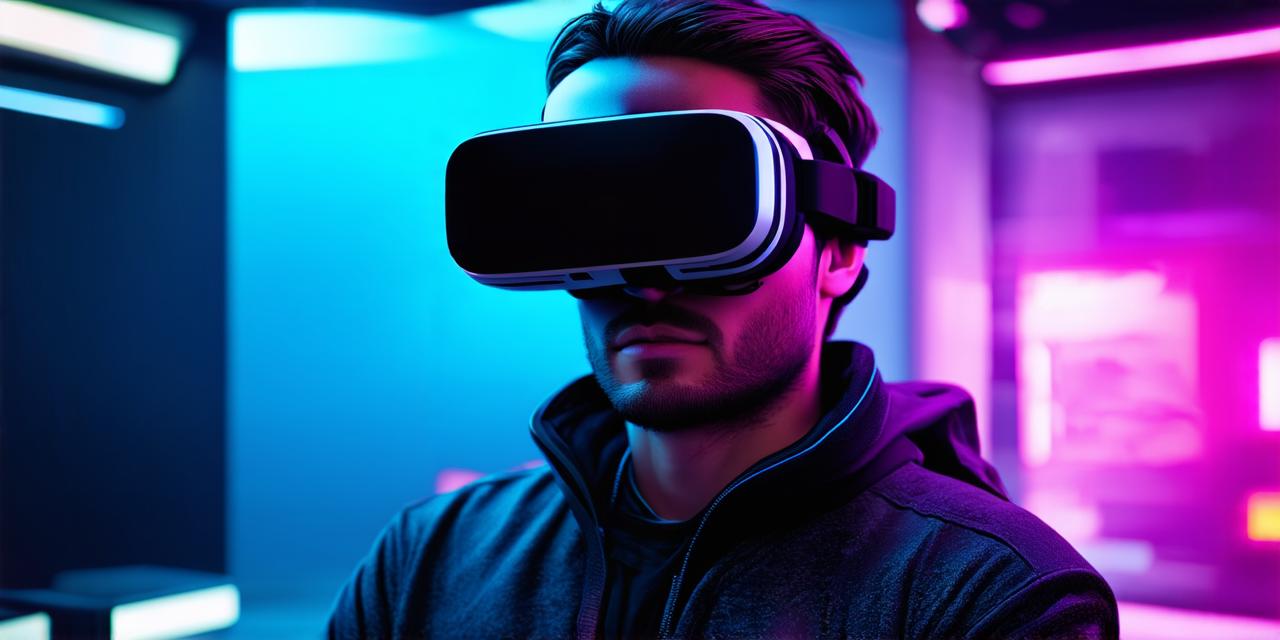1. Start with a Clear Vision
Before diving into the technical aspects of VR development, it’s important to have a clear idea of what you want to achieve. What kind of experience are you trying to create? Who is your target audience? These questions will help guide your design process and ensure that your VR experience resonates with users.
2. Prioritize User Experience
User experience (UX) is crucial when it comes to VR development. A bad UX can quickly lead to frustration and disengagement, while a great UX can enhance the overall experience and keep users coming back for more.
To optimize user experience, consider the following:
- Keep the environment simple and intuitive
- Use natural interactions that feel realistic
- Provide clear instructions and feedback
- Test your VR experience with real users to get feedback and identify areas for improvement
For example, the popular VR game “Beat Saber” is praised for its intuitive UX. The game provides clear instructions on how to play and offers a variety of visual cues that help guide users through the experience.
3. Optimize for Performance
Performance is critical in VR development, as even small delays or glitches can disrupt the immersion and cause motion sickness. To optimize performance, consider the following:
- Use low-poly models and textures to reduce load times and improve frame rates
- Minimize environmental effects that can slow down performance, such as particle effects or complex lighting
- Implement caching techniques to reduce the amount of data that needs to be loaded at once
- Use asynchronous loading to minimize the impact of loading delays on the user experience
For example, the VR game “Job Simulator” is praised for its optimized performance. The game uses low-poly models and textures to improve load times and reduce the impact of complex visual effects.
4. Incorporate Realistic Audio
Audio is an essential component of any VR experience, as it can help immerse users in the environment and create a more realistic experience. To incorporate realistic audio, consider the following:
- Use 3D audio to create a sense of spatial awareness and enhance the immersion
- Incorporate dynamic audio that changes based on user actions or environmental factors
- Use ambient sounds that reflect the environment and add to the overall atmosphere
For example, the VR game “Echo Arena” is praised for its realistic audio. The game uses 3D audio to create a sense of spatial awareness and enhance the immersion.
5. Test, Iterate, Repeat
Finally, the key to creating a great VR experience is testing and iteration. Even with the best ideas and techniques in place, there’s always room for improvement. To optimize your VR experience, consider the following:
- Conduct user testing with real users to get feedback and identify areas for improvement
- Iterate on your design based on user feedback and data analysis
- Continuously monitor performance and make adjustments as needed to maintain a smooth frame rate
For example, the VR game “Job Simulator” is praised for its iterative development process. The game was continuously updated with new content and features based on user feedback and data analysis.
Conclusion
In conclusion, creating a great virtual reality experience requires careful planning, attention to detail, and a focus on user experience. By prioritizing clear vision, optimizing for performance, incorporating realistic audio, and continuously testing and iterating on your design, you can create a highly immersive and engaging VR experience that resonates with users.
FAQs
1. What are some common causes of motion sickness in VR experiences?
Motion sickness is often caused by factors such as low frame rates, excessive movement or acceleration, and lack of visual cues for orientation.
2. How can I optimize my VR experience for lower-end hardware?
To optimize your VR experience for lower-end hardware, consider using low-poly models and textures, minimizing environmental effects, and implementing asynchronous loading.
3. What role does audio play in VR experiences?
Audio is an essential component of VR experiences, as it can help immerse users in the environment and create a more realistic experience.
4. How can I conduct user testing for my VR experience?
To conduct user testing for your VR experience, you can recruit real users to try out your experience and provide feedback on their experience, as well as gather data on performance metrics such as frame rates and load times.
